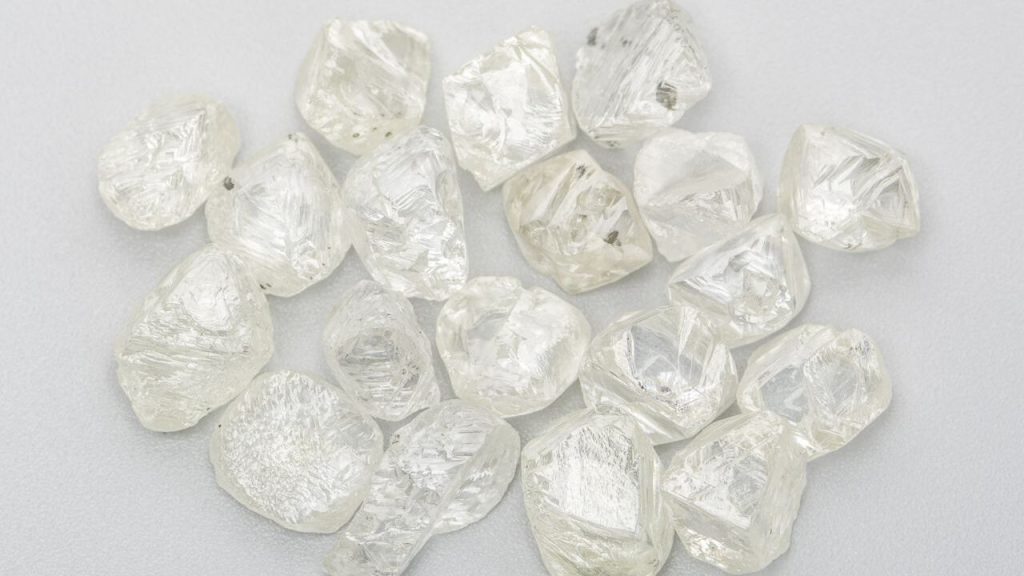
The US and the UK will require importers of polished diamonds weighing 1 carat and above to apply a “self-certification” declaring the stones are not of Russian origin, while the UK will also expect documentary proof in some cases.
The new US guidelines are a follow-up to last month’s directive by the US Office of Foreign Assets Control (OFAC) implementing tighter restrictions on loose Russian diamonds and those set into jewelry that had been in part or fully manufactured or “substantially transformed” in another country. The rules address a loophole that had been in place since the US first imposed sanctions in March 2022.
The US Customs and Border Protection released an update to the bans beginning March 1, calling for importers to upload a PDF on official company letterhead, it said last week. For nonindustrial diamonds, the self-certification should state: “I certify that the nonindustrial diamonds in this shipment were not mined, extracted, produced, or manufactured wholly or in part in the Russian Federation, notwithstanding whether such diamonds have been substantially transformed into other products outside of the Russian Federation.”
Those bringing in diamond jewelry or unsorted diamonds should submit a document saying: “I certify that the diamond jewelry and unsorted diamonds in this shipment are not of Russian Federation origin or were not exported from the Russian Federation.”
The UK government’s Department for Business and Trade has followed suit, noting that supplier declaration of compliance with the sanctions “may be acceptable,” but that “traders should be prepared to provide documentation to demonstrate evidence of a stone’s supply chain.” That evidence can include the original Kimberley Process (KP) certificate issued when shipped from the diamond’s origin country, an invoice, a certificate of origin issued by a chamber of commerce, or a diamond origin report. The government also distributed rules for diamonds manufactured in another country that were outside of Russia before March 1.
Last week, the London Diamond Bourse (LDB) held an emergency meeting to discuss the ban due to the “absence of clarity and guidance…as to how we might conform with the restrictions…in terms of paperwork and provenance” before the March 1 launch, it said. The exchange noted it was in an “invidious” position and felt its members and the greater trade should avoid importing polished loose diamonds above 1 carat until there is “less ambiguous guidance.” The bourse may put out updated guidance following the release of the new rules.
While neither the US or the UK has given a timeline as to how long these guidelines will be in effect, it’s likely the less restrictive rules will only be valid during the “sunrise period,” which ends August 31 and allows importers time to become accustomed to the new measures. The European Union has stated that it would accept documentation proving non-Russian origin during the initial timeframe but will expect all stones passing through Antwerp to be placed on a traceability system beginning September 1. At that point, restrictions in all Group of Seven (G7) nations — Canada, France, Germany, Italy, Japan, the US and the UK, as well as the EU — will expand to include diamonds weighing more than 0.50 carats.
For its part, Canada also produced a statement noting it would comply with the March 1 curbs against indirect imports of Russian-origin diamonds.
“Canada has been at the forefront of imposing economic barriers on the Putin regime,” said Mélanie Joly, the country’s minister of foreign affairs. “Along with our allies and partners, we have imposed severe sanctions on the Russian regime, and we will continue to do so to hold [Russian President Vladimir] Putin and his enablers to account.”
The current self-certification rules are likely to provide a temporary solution to concerns industry groups voiced over a proposal that all diamonds would be funneled through Antwerp for screening and certification prior to arriving at their destination countries, a move the organizations feared would harm the rest of the industry.
On Saturday, India’s Gem and Jewellery Export Promotion Council (GJEPC) sent a message to members urging them to “review guidelines meticulously,” and “exercise utmost caution when dispatching shipments to G7 countries.” The council also advised exporters to “maintain meticulous records of all documents of import and purchase.” A large portion of the world’s rough is manufactured in the country before making its way to consumer nations.
“It is crucial to emphasize that while some of the G7 countries/EU have already issued guidelines to their importers, a few are still in the process of finalizing theirs,” the GJEPC said. “We believe even the issued ones are initial guidelines and are subject to changes [and] updates during the course of time.”
Source: DCLA


No comments:
Post a Comment